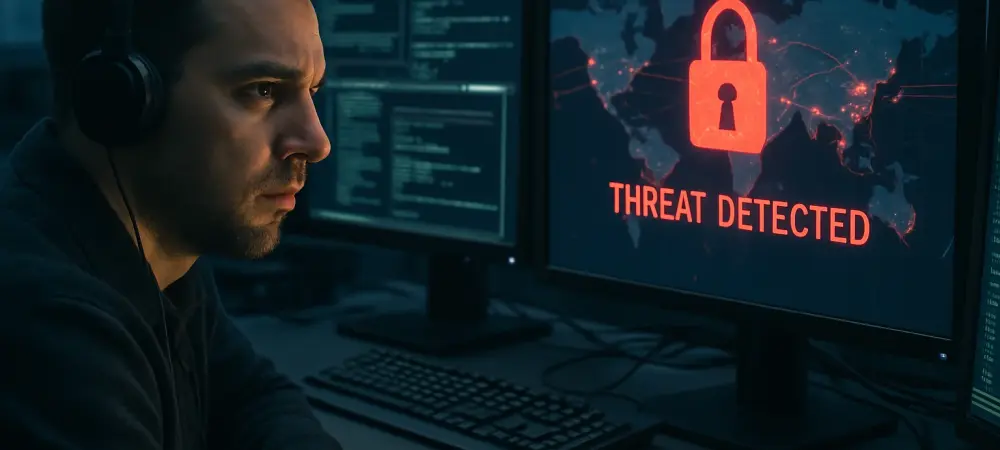In today’s rapidly advancing digital world, cybersecurity threats morph at an alarming pace, presenting significant challenges for businesses and individuals alike. The introduction of sophisticated malware and zero-day exploits in the cybersecurity arena highlights the urgency for robust defenses against potential intrusions. With vulnerabilities like those in Ivanti Connect Secure (ICS) appliances being actively targeted by malicious entities, it is essential for organizations to remain informed about the current threat landscape and take preemptive action to safeguard their systems.
The Rise of MDifyLoader and Its Impact
Exploiting Known Vulnerabilities
A notable concern in recent cybersecurity incidents has been the emergence of the MDifyLoader malware, which has utilized advanced techniques to compromise vulnerable systems. Specific vulnerabilities, such as CVE-2025-0282 and CVE-2025-22457, have facilitated unauthorized access, allowing attackers to execute remote codes and deploy harmful payloads. The former entails an unauthenticated remote code execution issue, which was successfully addressed by Ivanti early this year. However, the latter, a stack-based buffer overflow, saw resolution only a month later, highlighting the necessity for swift remediation efforts. These specific vulnerabilities have paved the way for malware families like SPAWNCHIMERA and DslogdRAT to wreak havoc on unpatched systems. Attackers have leveraged these exploitable flaws alongside techniques like DLL side-loading and other advanced infiltration methods, demonstrating the strategic sophistication of their operations. Through these attacks, they have successfully undermined system defenses, employing an encrypted Cobalt Strike beacon payload to execute malevolent actions within compromised systems. The strategic deployment of these payloads indicates a deep understanding of system architecture and showcases a level of technical expertise that demands innovative defensive measures from cybersecurity practitioners.
Advanced Cyber Infiltration Techniques
Further complicating the situation are the additional complex techniques employed by cyber adversaries, aiming to create significant damage while evading detection. Cybersecurity experts emphasize the emergence of sophisticated toolsets, such as a Go-based remote access tool known as VShell, often associated with certain hacking collectives. Additionally, the notorious network scanning utility Fscan has been noted for its effectiveness, thus becoming a favored resource among groups targeting vulnerable systems. The use of these utilities originates from open-source platforms, increasing accessibility for threat actors while complicating monitoring efforts.
Moreover, these groups have endeavored to maintain their infiltration through brute-force attacks, including those on FTP, MS-SQL, and SSH servers. Notorious exploits like EternalBlue SMB (MS17-010) have been utilized to extract credentials and facilitate lateral movements within breached networks. In a similar vein, the practice of embedding new domain accounts within existing groups has been a preferred method for ensuring long-term access. Even after an initial breach, the strategy of consistent system infiltration, especially by registering malicious code within critical system areas, marks a concerning escalation in long-term access tactics by these threat actors.
Maintaining Secure Cyber Defense Strategies
The Importance of Vigilance and Timely Updates
In light of these evolving threats, maintaining robust cybersecurity defenses demands consistent vigilance and the timely application of software updates and patches. Companies like Ivanti have responded by identifying and addressing vulnerabilities proactively, sharing advisory notes to ensure ICS products remain secure. Despite the challenges, the ongoing dissemination of updates emphasizes the necessity for organizations to adhere to security best practices and remain agile against a backdrop of escalating cyber threats. Organizations must rethink their security protocols, ensuring comprehensive strategies that integrate advanced threat detection and response capabilities. Proactive network monitoring combined with training for all personnel significantly enhances the ability to detect early warning signs and disrupt malicious activities before they result in severe data breaches. Moreover, fostering a culture of cybersecurity awareness remains paramount in preventing successful exploits by empowering individuals to recognize and report suspicious activities.
Insights From Ongoing Investigations
In the relentless march of today’s digital age, cybersecurity threats are evolving at a startling rate, posing considerable challenges to both businesses and individuals. The emergence of advanced malware and zero-day exploits in the cybersecurity field underscores the pressing need for fortified defenses against these potential break-ins. At the forefront are vulnerabilities such as those found in Ivanti Connect Secure (ICS) appliances, which are actively pursued by malicious actors. This situation mandates that organizations stay vigilant, informed about the prevailing threat landscape, and undertake proactive measures to protect their systems. It’s crucial for both private and public sectors to regularly update cybersecurity protocols, educate staff about best practices and potential risks, and invest in cutting-edge security technologies. By doing so, they can not only buffer themselves against current risks but also anticipate future threats, ensuring information integrity and business continuity in an ever-connected world.

